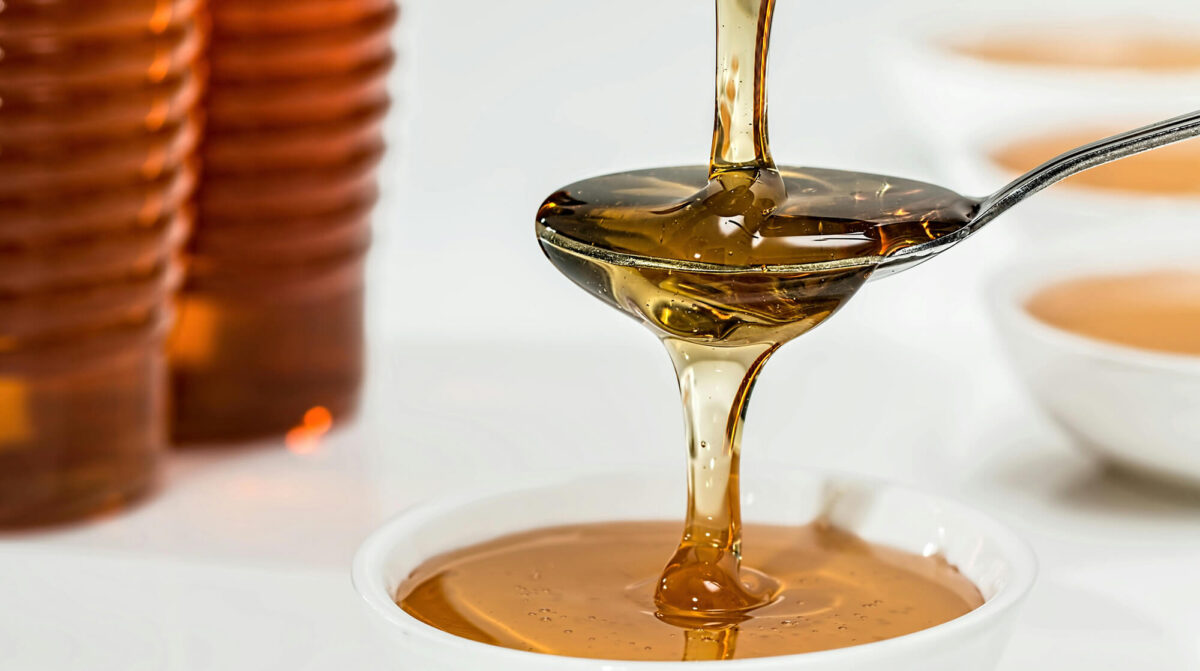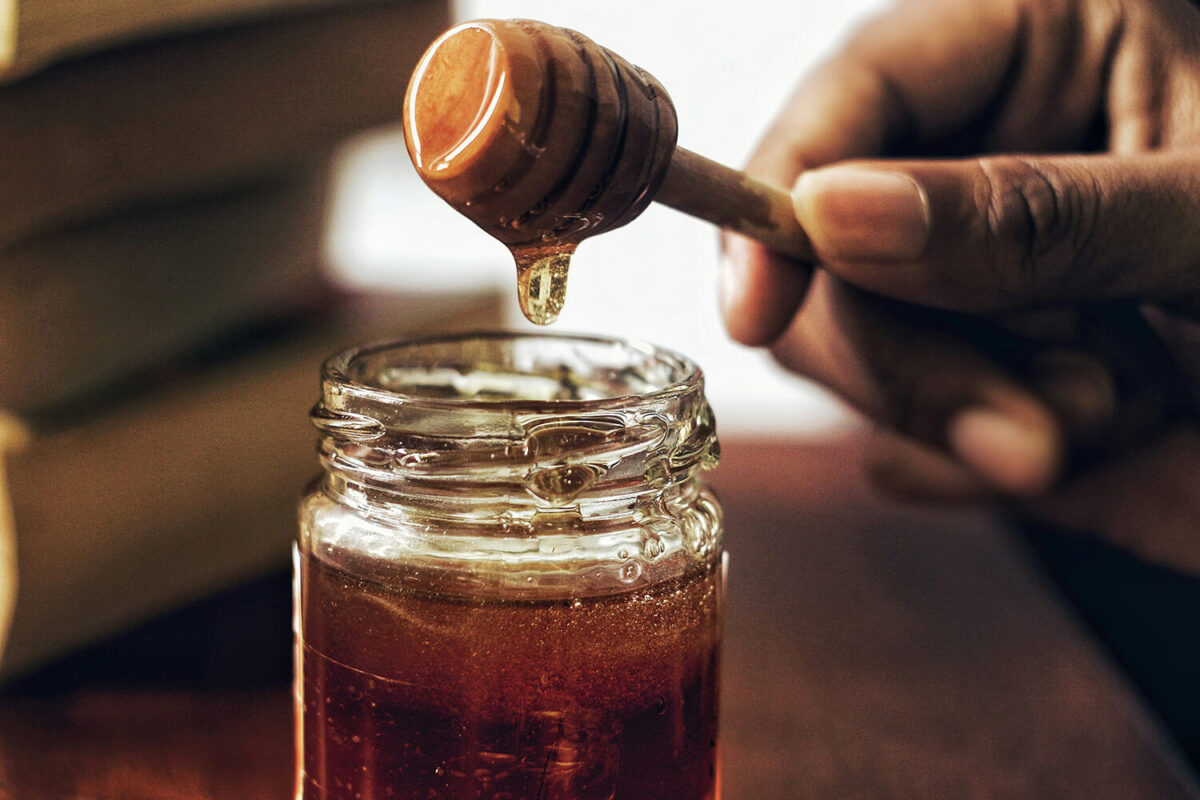For thousands of years, honey has been more than just a natural sweetener. From ancient Egyptian medical texts to traditional healing practices across cultures, this golden elixir has been revered as nature’s medicine. While our ancestors may not have understood the molecular mechanisms behind honey’s healing properties, modern science is now validating what traditional wisdom has long known: honey is a powerful therapeutic agent with remarkable health benefits.
What makes honey truly special isn’t just its sweet taste or golden color – it’s the complex symphony of bioactive compounds working together in ways that modern medicine is still working to fully understand. Today’s research has revealed that honey contains over 200 distinct compounds, including antioxidants, enzymes, minerals, and unique phytochemicals that contribute to its therapeutic properties.
Each spoonful of natural honey represents a concentrated source of nature’s pharmacy. Unlike many other natural remedies that our bodies struggle to absorb and utilize, honey’s composition makes its beneficial compounds highly bioavailable – meaning our bodies can efficiently access and use these health-promoting elements.
What’s particularly fascinating is how honey manages to combine antimicrobial properties with tissue-healing abilities. It’s one of the few natural substances that can fight harmful bacteria while simultaneously promoting the growth of healthy cells – a delicate balance that modern pharmaceuticals often struggle to achieve.
As we dive deeper into the science behind honey’s health benefits, you’ll discover how this ancient superfood:
The best part? These aren’t just traditional claims – they’re backed by rigorous scientific research that continues to uncover new ways honey supports our health. Let’s explore the evidence behind honey’s remarkable therapeutic properties…
Before we dive into the specific health benefits, it’s crucial to understand what makes honey such a unique natural remedy. While many people think of honey simply as a natural sweetener, it’s actually one of the most complex natural substances we know of, containing approximately 200 distinct compounds. [ Ranneh 2021]
The Power Lies in Its Components:
One of honey’s most remarkable features is its high bioavailability – meaning our bodies can effectively absorb and utilize its beneficial compounds. While many natural products contain healthy compounds, they often struggle to survive our digestive process or can’t be properly absorbed by our bodies. Honey, however, has several unique characteristics that enhance its therapeutic potential:
It’s important to note that not all honey is created equal. Raw, unprocessed honey contains the full spectrum of these beneficial compounds, while excessive processing or heating can diminish these natural properties. This is why you might notice different colors, tastes, and consistencies in natural honey – these variations actually reflect different combinations of beneficial compounds based on the flowers the bees visited and the honey’s processing.
In recent years, scientists have discovered that chronic inflammation lies at the root of many modern health problems – from digestive issues to cardiovascular disease. While this discovery has led to numerous synthetic anti-inflammatory medications, honey has emerged as a powerful natural alternative with scientifically proven effects. [Cianciosi]
What makes honey especially fascinating is its dual approach to fighting inflammation. Unlike synthetic anti-inflammatory medications that typically work through a single mechanism, honey operates through multiple pathways:

At the molecular level, honey has been shown to influence several key factors in inflammation:
This anti-inflammatory action translates into several practical health benefits:
The use of honey for healing wounds dates back to ancient civilizations, and modern medicine is rediscovering what our ancestors knew through practice. From minor cuts to serious wounds, honey’s healing properties have caught the attention of medical researchers and practitioners worldwide. [ Pasupuleti 2017]
Honey creates the perfect environment for healing. When applied to a wound, it forms a protective barrier that keeps the area moist while preventing bacterial growth. This natural barrier allows new skin cells to grow and migrate across the wound surface, speeding up the healing process.
What makes honey particularly remarkable is its ability to be both gentle and powerful at the same time. While many modern antiseptics can damage healthy tissue along with harmful bacteria, honey selectively targets unwanted microorganisms while supporting healthy cell growth.
At the molecular level, honey stimulates the production of proteins and compounds that help rebuild damaged tissue. It encourages the development of new blood vessels in the wound area, bringing essential nutrients and oxygen to support healing. Perhaps most impressively, honey helps reduce scarring by promoting organized tissue repair.
Honey’s benefits for skin health extend far beyond just wound healing. It’s showing promising results in treating various skin conditions:
Modern medicine has found honey particularly effective for treating diabetic foot ulcers, a challenging condition that often resists conventional treatments. The combination of honey’s antimicrobial properties and its ability to promote tissue repair makes it uniquely suited for these difficult-to-heal wounds.
For everyday skin care, honey helps maintain skin health by providing natural hydration while balancing the skin’s microbiome. Its antioxidant properties also help protect against environmental damage, making it a valuable addition to skincare routines.
When it comes to wound care and skin health, not just any honey will do. Medical-grade honey is specifically tested and processed to ensure sterility and consistent antimicrobial activity. For general skincare, raw, unpasteurized honey provides the most benefits, as it retains all its natural healing compounds.
As antibiotic resistance becomes an increasing concern in modern medicine, honey’s natural antimicrobial properties are gaining renewed attention from the medical community. Research continues to uncover new ways this ancient remedy can complement modern medical treatments, particularly in wound care and skin health management.
At first glance, it might seem counterintuitive that a sweet substance like honey could have beneficial effects on metabolism. Yet research has revealed that honey’s impact on our body is vastly different from that of refined sugars. [Ranneh 2021]
Unlike table sugar or artificial sweeteners, honey is a complex natural substance that the body processes in its own unique way. The combination of fructose and glucose, along with honey’s bioactive compounds, creates a more balanced metabolic response. When you consume honey, your body doesn’t experience the same rapid blood sugar spikes typically associated with other sweeteners.
Perhaps one of the most fascinating discoveries about honey is its relationship with heart health. Research has shown that natural honey can actually help support healthy cholesterol levels. It appears to help increase beneficial HDL cholesterol while having a positive effect on other cardiovascular risk factors.
The antioxidants present in honey play a crucial role here. These compounds help protect blood vessels from oxidative stress and support overall cardiovascular function. Some studies have even indicated that regular honey consumption might help maintain healthy blood pressure levels.
What makes honey truly remarkable is its ability to work with the body’s natural metabolic processes rather than against them. Studies suggest that honey can help:
Support healthy blood sugar regulation through its unique carbohydrate composition Enhance the body’s natural antioxidant defenses Aid in energy metabolism without causing dramatic blood sugar fluctuations
For athletes and active individuals, honey has emerged as a natural alternative to processed energy gels and supplements. Its natural sugar blend provides sustained energy during exercise, while its anti-inflammatory properties may help support recovery after intense physical activity.
The journey through honey’s health benefits brings us full circle – from ancient wisdom to modern scientific validation. What our ancestors knew through centuries of observation, science has now confirmed through rigorous research. Honey is far more than just a natural sweetener; it’s a complex, bioactive substance with remarkable therapeutic potential.
As research continues to unveil new insights about honey’s therapeutic properties, we’re likely to discover even more ways this ancient superfood can support modern health needs. From fighting antibiotic-resistant bacteria to supporting metabolic health, honey continues to surprise and impress the scientific community.

The most remarkable aspect of honey might be how it bridges the gap between traditional healing wisdom and modern medicine. In a world where we often have to choose between natural and effective, honey stands as a shining example of how something can be both.
Remember, when it comes to honey’s health benefits, consistency matters more than quantity. Small, regular amounts of high-quality honey can provide significant benefits over time. Choose raw, unprocessed honey when possible, and pay attention to how your body responds to different varieties.

Copyright 2024 © Mountaindrop. All rights reserved. Powered by EOSNET









